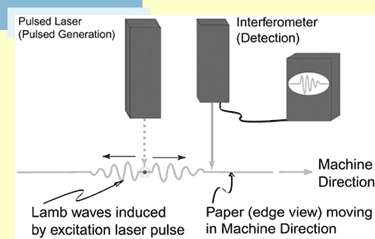The fast pace at which the use of new forest product technology for making paper, recycling and pulping signifies development and need for efficiency in the forest industry. As this paper shall examine from a case study on the use of forest product technology by Consolidated Papers Inc, a leading North American Producer of super-calendered and coated printing papers, the use of technology in the forest industry in America is a powerful force that is changing the forest product market.
Forest product technology for papermaking
Gas-fired paper dryer
A gas-fired paper dryer is one of the new technologies used by Consolidated Papers Inc. in its paper making processes. This innovative system incorporates a dimpled heat transfer surface and a ribbon burmer to increase efficiency and energy needed for effective drying of papers.
This machinery has been lauded as a useful and valuable technology by the Groupe Laperriere and Verreault (GL&V) in the USA and Boise Paper Solutions which have tested and demonstrated its efficiency. The gas-fired paper dryer is a new tool with a high drying capacity. Uwasu et al (2012) indicate in that this system has a drying drum through which surface temperature is increased.
Traditionally, companies in the forest industry have relied on steam system to dry papers during paper making process. Inasmuch as the system has been effective, the aforementioned new technology introduces efficiency and is a direct replacement of other drying methods. The gas-fired paper dryer works through coming into contact with surfaces of the drum that are hot which provide a drying effect.
Laser-ultrasonic web stiffness sensor
This new technology is the only sensor that is being used to measure stiffness of light weight papers online. It works through a non-contact sensor. In addition, it controls and guides real time processes essential for reducing costs due to waste reprocessing and to optimize paper quality during manufacture. This technology was developed by the Institute of Paper Science and Technology at Georgia Tech and demonstrated at Boise Mills and MeadWestvaco.
Figure 1: A diagram showing a Laser ultrasonic sensor

Dumont et al (2006) indicate that this technology is significant in the sense that its non-contact characteristics ensure no downtime production or risk of tearing. Besides, it is highly efficient because unlike contact sensors, its abrasive and hot web does not cause overheating, drift damage and wear.
It is imperative to highlight that in comparison to the paper mill, the LUSS offers continuous monitoring of an out-of-plane shear and flexural rigidity when constructing reel. In addition, it reduces off-spec product waste, improves product uniformity and decreases energy consumption.
Dumont et al (2006) add that the value of this technology in paper making is vast. His argument hinges on the notion that it provides room for feedback critical for using right specifications and measuring product properties during a manufacturing process. Natural resources will be saved if such values are adopted and embraced as part and parcel of conserving the ecosystem.
To sum up, the new technologies employed in papermaking are very effective compared to current systems being applied in the forest industry. For instance, the LUSS is unique and there is no any other online tool with similar measuring qualities for paper bending stiffness. In addition, the thickness of the paper can be accurately calculated by making use of the optic capacity.
References
Dumont, G.A., Stewart, G.E., Davies, M. S. & Yang, D. W. (2006). Modelling paper machine cross direction slice lip responses close to sheet edges. Pulp & Paper Canada, 107(1), 43-47.
Uwasu, M., Hara, K., Yabar, H., & Zhang, H. (2012). Analysis of Energy Productivity and Determinant Factors: A Case Study of China’s Provinces. Journal of Sustainable Development, 5(6), 1-9.